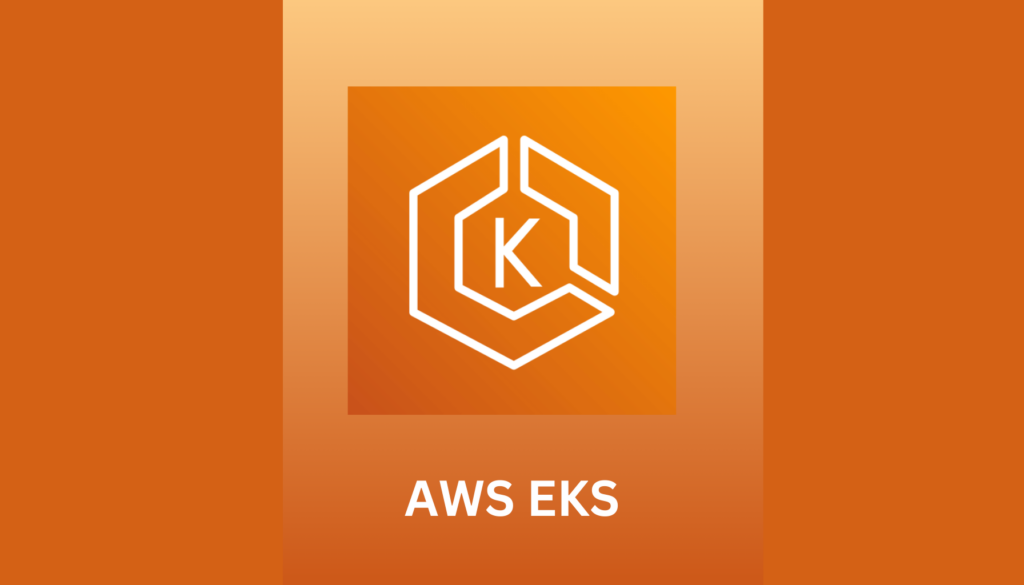What is Amazon EKS?
Amazon EKS (Elastic Kubernetes Service) is a managed service offered by Amazon Web Services (AWS) that simplifies the process of deploying, managing, and scaling containerized applications using Kubernetes on AWS. Kubernetes is an open-source system for automating the deployment, scaling, and operation of application containers across clusters of hosts. EKS automates many of the complicated tasks involved in managing Kubernetes, such as cluster creation, patching, and upgrades.
EKS runs the Kubernetes management infrastructure across multiple AWS availability zones, reducing the risk of a single point of failure. It integrates with AWS services to provide scalability and security for your applications, including Elastic Load Balancing for distributing incoming traffic, IAM for authentication, and VPC for isolation.

Amazon EKS Core Features
Amazon EKS (Elastic Kubernetes Service) provides robust features that elevate containerized application management to a whole new level. Let’s explore the key features EKS provides.
- Managed Kubernetes Clusters: Amazon EKS (Elastic Kubernetes Service) simplifies the process of running Kubernetes on AWS by managing the Kubernetes control plane for you. This includes taking care of scaling and updating the Kubernetes software, thereby relieving you of the operational burden. The managed clusters can run on AWS virtual machines (EC2) or can be integrated with AWS Fargate, a serverless compute engine for containers, which eliminates the need to provision and manage servers.
- Integration with AWS Services: EKS is deeply integrated with AWS services, providing a seamless experience for Kubernetes deployments. This includes integration with Amazon EC2 for computing resources, Elastic Load Balancing (ELB) for distributing incoming traffic, Amazon VPC for network isolation, and IAM for identity and access management. This integration allows for a more cohesive and efficient management of resources.
- Scalability and Reliability: EKS is designed for high availability and scalability. It automatically distributes Kubernetes control plane nodes across multiple AWS Availability Zones to ensure high availability. EKS also scales the Kubernetes nodes based on demand, ensuring that your applications have the resources they need when they need them.
- Security and Compliance Features: Security in EKS is robust, featuring encryption at rest and in transit, integrated with AWS Key Management Service (KMS). It also adheres to AWS’s high standards of compliance and security, ensuring that your Kubernetes clusters are secure. EKS integrates with AWS Identity and Access Management (IAM), allowing for fine-grained access control to the Kubernetes APIs. This means you can apply the principle of least privilege and ensure that only authorized users can access your Kubernetes clusters.
Amazon EKS Pricing Overview
Amazon EKS (Elastic Kubernetes Service) has a pricing model that primarily consists of the cost of managing Kubernetes control planes and any additional resources used, such as EC2 instances or Fargate for pod execution. The pricing is transparent and is charged per hour for each EKS cluster that you create. This means you pay for the EKS control plane as long as it is active, regardless of the workload it manages.
The costs associated with running worker nodes (whether on EC2 instances or Fargate) are billed separately. When using EC2 instances, you pay for the compute and storage resources that these instances use. With AWS Fargate, pricing is based on the vCPU and memory resources that your containerized application requests.
Does Amazon EKS (Elastic Kubernetes Service) offer a Free Tier?
Amazon EKS (Elastic Kubernetes Service) does not offer a free tier option as of writing this article. The cost of running EKS is primarily dependent on other services such as EC2 instances or Fargate for worker nodes. While you can take advantage of the EC2 Free Tier for your worker nodes, you will still incur charges for other components like the EKS Control Plane. It’s important to note that the EC2 Free Tier, which includes 750 hours per month of t2.micro or t3.micro instances for the first 12 months, allows for the use of multiple instances. The total usage, however, must not exceed 750 hours per month collectively across all these instances.
How to do Cost Optimizations for Amazon EKS?
Cost Optimization is key to a successful cloud service deployment. By following some key strategies, you can significantly lower the cost of your deployment while still maintaining optimal performance. This includes,
- Right-Sizing Clusters: Regularly review and adjust the size of your EKS clusters. Ensure that you are using the most cost-effective instance types and sizes that meet your application requirements.
- Utilize Spot Instances: Take advantage of AWS EC2 Spot Instances for running stateless or flexible workloads. Spot Instances can significantly lower your computing costs compared to on-demand instances.
- EKS with AWS Fargate: Consider using AWS Fargate for running containers without having to manage servers or clusters. Fargate can be more cost-effective for certain workloads, particularly those with sporadic resource demands.
- Autoscaling Effectively: Implement Kubernetes autoscaling to automatically adjust the number of nodes or pods based on the current workload. This ensures you only pay for the resources you need.
- Optimize Load Balancing: Use AWS Elastic Load Balancing judiciously to ensure that you are not over-provisioning resources.
- Monitor and Optimize Usage: Regularly monitor your EKS usage with tools like AWS CloudWatch and the AWS Cost Explorer. Identify underutilized resources and make adjustments to minimize costs.
- AWS Cost Management Tools: Utilize AWS’s built-in cost management tools to track and optimize your spending. Tools like AWS Budgets and the AWS Cost & Usage Report can help you understand your spending patterns and identify areas for cost savings.
Ready to elevate your AWS strategy?
[Reach out] for specialized guidance to ensure your setup is both cost-effective and high-performing.
Conclusion
Mastering cost optimization is key to maximizing the benefits of Amazon EKS (Elastic Kubernetes Service). Implementing strategic measures to manage and reduce expenses, while maintaining high performance, enables a more efficient and cost-effective cloud service deployment. This balance is crucial for leveraging the full capabilities of EKS and achieving success in the cloud computing landscape.

